Branding Design Quality ®
BDQ
Six Branding Design Qualities
to Increase Brand Value
Not just quality, but impressions drive brand business. At POROROCA, we have developed a unique design evaluation axis to measure the quality of branding design that influences a brand's impression. By maximizing the quality of branding design through these six evaluation axes, we elevate the company's brand image to the next level, contributing to the improvement of brand value.
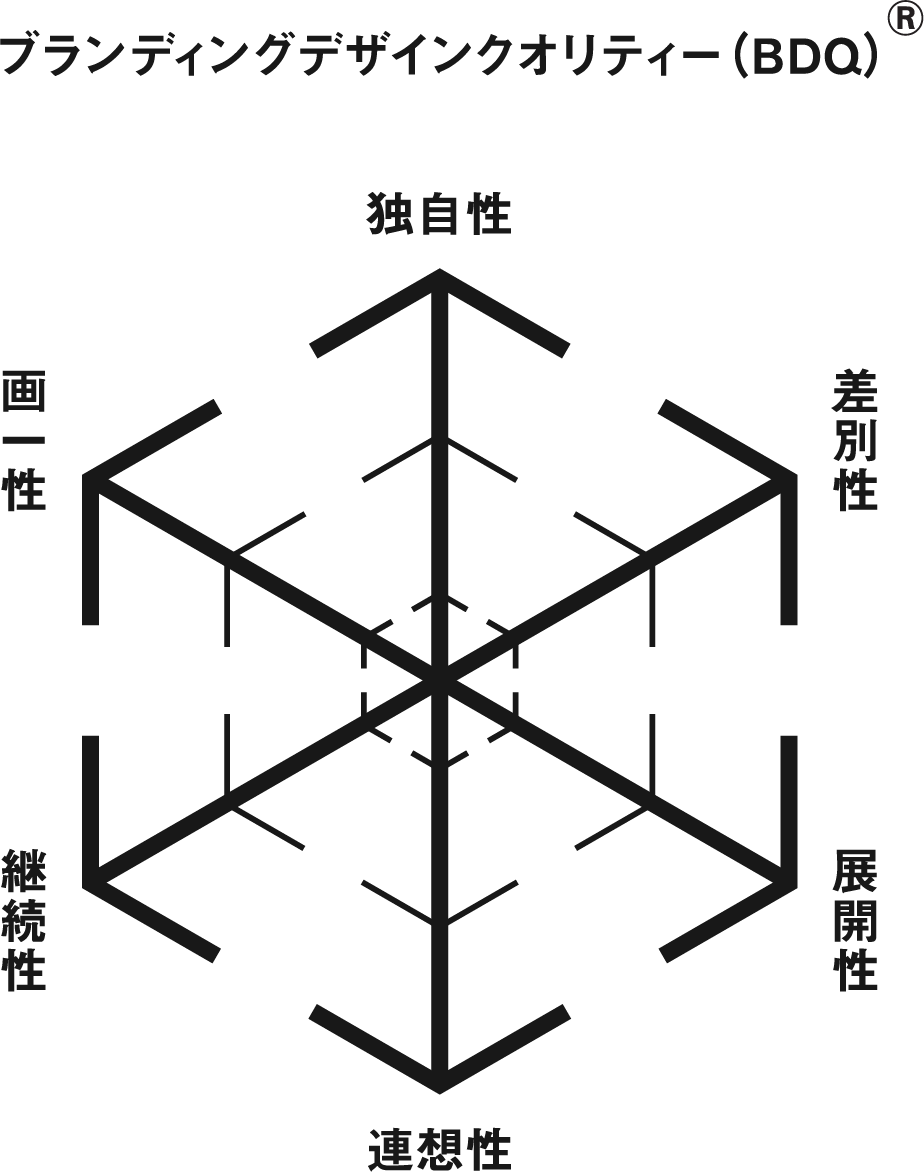
What is
Branding Design Quality
(BDQ)?
Improving the quality of branding design increases the brand value of a company.
We have adopted a unique approach that recognizes six qualities in branding design. Led by branding designers, expanding design quality across each of these metrics results in an outward expansion from the center of the metric frame, drawing a hexagram as it grows. This hexagram-shaped growth in design quality ultimately leads to an improvement in the company's brand image, elevating the brand value. This approach serves as an important criterion for designers in making judgments about branding design.
1. Uniqueness
(The degree to which branding design expresses the essence of the brand)

ObjectiveDifferentiating from Competitors in the Market and Leveraging Portfolio to Enhance Brand Image.
At POROROCA, we start with the business portfolio as a starting point and develop a unique branding strategy. In this approach, the aim is to visualize strengths that are not found in other companies in order to build a unique position in the market. A specific example is the importance of logo design. It needs to have a unique image and concept that can be identified at a glance. For designers, it's important to bring out the maximum value and appeal of each company's unique brand. This kind of uniqueness is a core element in branding design and is essential for successful branding. The expression of "uniqueness" in branding design, centered on logos and websites, forms a mechanism that contributes to the improvement of brand value and the sustainable growth of the business—long-term customer loyalty, increased profit margins, increased market share, and so on.
● Enhancement of Company Brand Value
Centering on the uniqueness of CI/VI (Corporate Identity/Visual Identity), a brand concept can be perceived as having impressive value in the minds of customers. As a result, higher price settings and the premium nature of the brand may be accepted.
● Creation of Emotional Connections
The design of an image that evokes a unique brand story helps to create an emotional connection with customers. This enhances the user experience and increases the likelihood of strengthened brand loyalty.
● Memory Retention
Branding designs and brand statements with unique concepts are more likely to be memorable to users. This increases the likelihood of repurchase and recommendations.
● Improvement of Competitive Edge through Branding Design
Brands with uniqueness in the market are less susceptible to imitation and pressure from other companies. In this regard, designers can emphasize unique values and features to differentiate from competitors.
● Maximization of Communication Effectiveness
Brand statements and images based on unique concepts assist in maximizing the effectiveness of marketing communication. They are more likely to attract user attention and prompt action.
2. Uniformity
(Consistency in branding design)
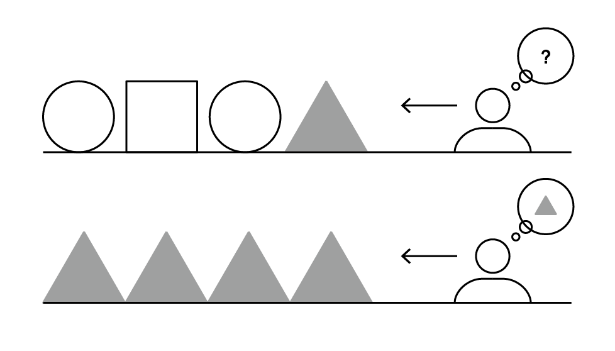
ObjectiveTo unify the brand image and user experience so that the brand is recognized as the same, no matter where it is seen.
Branding is a strategy where the same brand identity and message are expressed consistently across all touchpoints of the brand. Especially in the development of VI (Visual Identity) and CI (Corporate Identity), it's important that elements such as logos, brand colors, typography, imaging, and layout are unified by the designer. This uniformity helps build a strong brand identity and brand concept.
The approach to uniformity comes from here → Total Branding Thinking (TBT)
● Strengthening Brand Recognition
Uniformity allows customers to instantly recognize the brand image due to consistent design and messaging across various touchpoints like logos, advertisements, packaging, and websites. This clarity in concept elevates the brand value.
● Establishing Trust and Stability
A unified brand expression conveys professionalism and organizational stability, making it easier to earn customer trust.
● Minimizing Confusion
Maintaining the same message or image across various touchpoints ensures consistency in the information received by customers, avoiding confusion related to the brand.
● Efficient Marketing
Having consistent brand messaging and visual guidelines enables efficient production of websites, marketing materials, and campaigns. This can save both time and cost.
● Enhanced Internal Alignment
Sharing a consistent brand concept within the company helps to unify the commitment and direction of branding among all employees.
● Building Customer Relationships
Providing a consistent brand experience forms the basis for building long-term relationships with customers.
3. Scalability
(Expansion of Brand Image
and Concept)
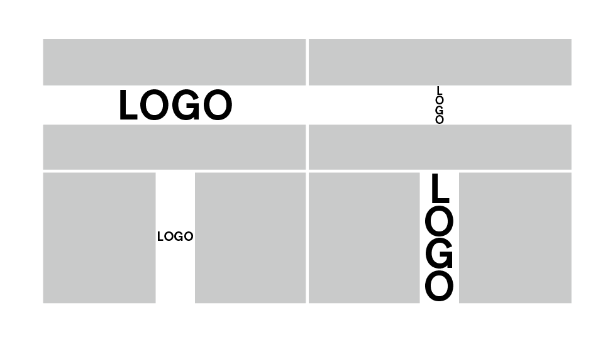
ObjectiveTo adapt to market changes and the emergence of new media, branding designers focus on expressing the company's branding design, centered around the logo, in various situations.
The concept of "Scalability (Ease of VI Deployment)" in branding design serves as an indicator to measure the adaptability of a company's visual identity across various customer touchpoints and media, including websites. Branding designs, starting with highly scalable logos, reflect the designer's approach to flexibly adapt to a rapidly changing market and media landscape. As a result, they play a role in effectively and consistently communicating the company's brand identity and value.
● Maintaining Brand Recognition Across Various Media
Branding design with high scalability makes it easy to express the brand in various media (digital, print, physical locations), enhancing brand image recognition and consistency.
● Efficient Brand Communication
In branding, if the visual identity can be easily scaled, it becomes possible to quickly and effectively implement new marketing strategies and campaigns.
● Ensuring Consistency of Brand Image and Preventing Confusion
Having a unified branding design across various touchpoints like websites and packaging prevents confusion about the brand image among customers, thereby enhancing its credibility and recognition.
● Improving Cost Efficiency
When CI/VI centered around the logo can easily adapt to various formats and media, the need for adjustments or changes in each deployment decreases, leading to cost savings in the long term.
● Quick Adaptation to Changing Times
In the face of changing technology and consumer behavior, branding design and concepts with scalability can quickly adapt to new trends and changes.
● Strengthening Internal Alignment
Branding design with clear guidelines and high scalability makes it easier for various departments and teams within the organization to consistently express the brand.
→As an example of "Scalability," we introduce the branding project for Hitotsubashi University by POROROCA.
4. Differentiation
(Distinctiveness of branding design along the spatial axis:
Competitive Brands)

ObjectiveBy learning a different approach from other companies' branding, the aim is to deeply deliver branding design to the user's heart.
Branding is a series of strategies and means for a company to distinguish its own brand from competitors and similar brands in the market. Within this, the concept of "differentiation" becomes an important element. The visual elements that designers create, such as logos and websites, are the main means of embodying this differentiation. Having differentiation serves as the foundation for establishing a unique position for the company's brand in the hearts of customers in a rapidly changing market, and for enhancing brand value. As an example, a website of a brand with high differentiation is a powerful tool, effectively providing a search experience that meets customer needs compared to competitors' websites.
● Clear Distinction from Competitors
To clarify a company's position within the market, it is crucial to make clear differences from competitors. Differentiation expressed through design plays a role in helping customers understand why the brand is unique and different from others.
● Instant Brand Recognition and Formation of Strong Impressions
If a branding design is uniquely differentiated, customers can immediately recognize the brand, making it easier to leave a lasting impression in their memory. This contributes to the long-term establishment of brand recognition and loyalty.
● Adaptation to Changing Competitive Environment
By updating and enhancing the differentiation of the branding design in response to market trends and the actions of competitors, it is possible to adapt to changing environments.
● Coordination with Pricing Strategy
By aligning the brand's pricing with its branding design, you can create differentiation from other brands in the market and offer impressions corresponding to the price.
5. Continuity
(Differences in Branding Design
Over Time: Trends)

ObjectiveTo adopt an approach that inherits the concept, with the aim of building long-term brand recognition and trust.
Branding is the ability to maintain the brand's image consistently over time, while also adapting to changing trends and market dynamics, without losing its essential value and identity. In this regard, the logo and other visual elements are particularly important and are aspects that designers should handle with special care. Many companies adopt this approach. Continuity means evolving with the times while not losing the core values and philosophies that make up the brand image. For example, companies with a long history have managed to maintain their core brand values while adapting to market changes and consumer needs and concerns. Branding designers are tasked with creating brand strategies and designs that adapt to market movements while keeping an eye on brand value.
● Enhancing Recognition
A consistent corporate branding design over time is more likely to stick in customers' memories, thereby strengthening brand recognition.
● Stability and Trustworthiness of Brand Image
A consistent branding design communicates the brand's stability and trustworthiness to customers. This stable image serves as a factor in elevating customer trust and loyalty.
● Maintaining a Balance Between Old and New Designs
A branding design with continuity incorporates new trends and technologies while inheriting the brand's traditions and history. Balancing the design in this way is key to captivating both new and existing customers.
● Economic Effects of Branding
Frequently making significant changes to branding elements not only incurs costs but can also cause confusion among customers. By maintaining the continuity of the brand concept while making subtle changes or updates, it's possible to maximize economic effects.
● Maintaining a Unique Concept
While it's important to follow trends, excessively jumping on them can risk losing differentiation from other brands. A design with continuity maintains uniqueness while enhancing the ability to adapt to market trends.
6. Associative Power
(Emotional Resonance in
Branding Design)

ObjectiveTo build a connection with users' memories and experiences, thereby heightening emotional bonds and engagement with the brand. ※Link to examples available.
Branding is the activity of enhancing the perceived value of a brand in the eyes of the customer. A key element in this process is "associative power," or the ability to evoke emotions, a concept adopted by many companies. Designers, especially branding designers, skillfully utilize this associative power when designing visual elements like logos and websites. For branding designers, associative power is a crucial element in forming the brand's image and leaving a lasting impression in the hearts of customers. Through this associative power, the company strengthens the connection between the brand and the customer, ultimately maximizing brand value. Specifically, a successful marketing campaign or promotional activity may bear fruit if it accurately evokes the targeted emotions or associations, aligning with the designer's planned strategy for enhancing brand value.
● Emotional Connection
Creating an emotional bond with customers by using branding design elements that evoke specific feelings or impressions.
● Storytelling
Using associative branding designs to serve as part of the brand's narrative, conveying its background, philosophy, or values, thereby allowing customers to form a more meaningful relationship with the brand.
● Differentiation
Elevating a brand's unique positioning and recognition in the market by utilizing branding designs that evoke specific emotions or impressions, setting it apart from competitors.
● Stimulating Purchase Intent
Enhancing customer interest and desire to purchase by employing branding designs that trigger specific emotions. For example, designs evoking luxury can elevate expectations for higher-priced products or services.
● Memory Anchoring
Strengthening the brand's presence in customers' memories by utilizing emotionally evocative branding designs.
● Cultural & Regional Resonance
Creating resonance with specific user groups by incorporating regionally or culturally targeted concepts, thereby making the brand more approachable and acceptable.
For examples
illustrating these six qualities, please click here.
There are three issues
with the six qualities
of branding design.
Uniqueness ←→ Associativity
Uniformity ←→ Expandability
Differentiation ←→ Continuity
Balancing Uniqueness and Associative Qualities
While the uniqueness of a brand image serves to distinguish and highlight the brand, it runs the risk of losing its relevance to the customer in the process. On the other hand, associative qualities strengthen the emotional connection between the brand and the customer, but may also compromise the brand's distinctiveness from other brands.
[Resolving the Paradox]
The aim is to find the right balance between uniqueness and associative qualities. The focus should be on emphasizing both attributes in the design without canceling out each other's effects.
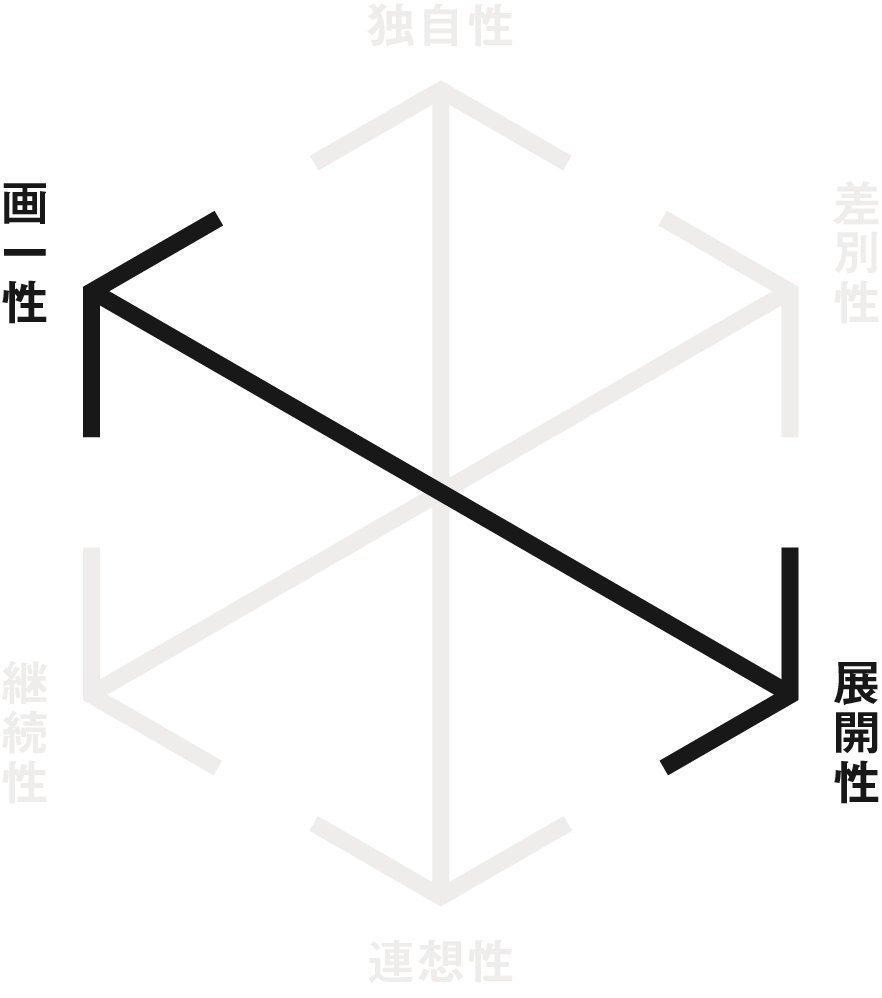
Balancing Uniformity
and Scalability
Uniformity aims to strengthen the consistency and recognition of the brand, but overly pursuing it may result in a loss of flexibility to rapidly adapt to new situations or market changes. Conversely, excessive emphasis on scalability might dilute the core identity of the brand, making the brand's perception vague among users.
[Resolving the Paradox]
The solution is to identify core design elements (such as logo, color, typography) that represent the essence of the brand. The focus should be on ensuring the consistency of these elements while maintaining flexibility in visual extensions like website and package designs.
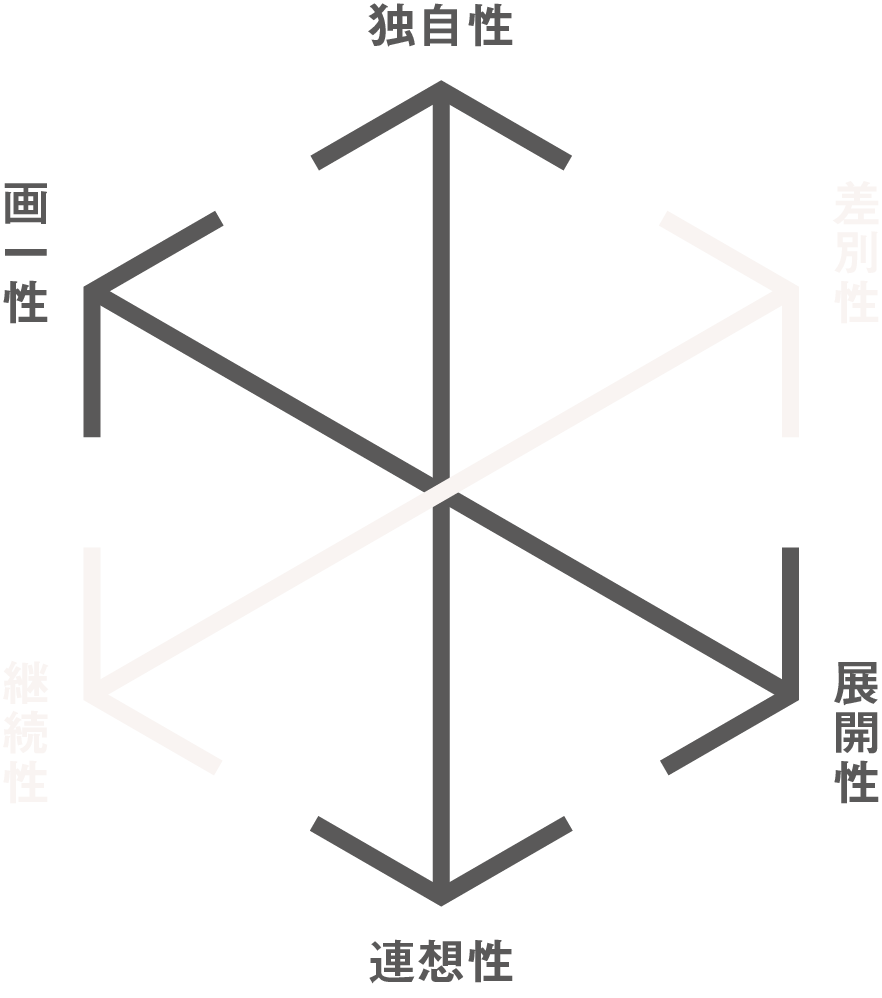
The Paradox of Differentiation
and Continuity
Pursuing differentiation in branding often means introducing new designs and ideas, thereby increasing the likelihood of the brand capturing attention. However, in doing so, there's a risk of drifting away from past identities and values. On the other hand, enhancing continuity boosts the stability and reliability of the brand but poses the danger of failing to adapt to market changes or new trends.
[Resolving the Paradox]
The key is to evolve the brand identity, CI, and VI in line with modern user needs and market shifts, while respecting the history and existing portfolio of the company's brand.
